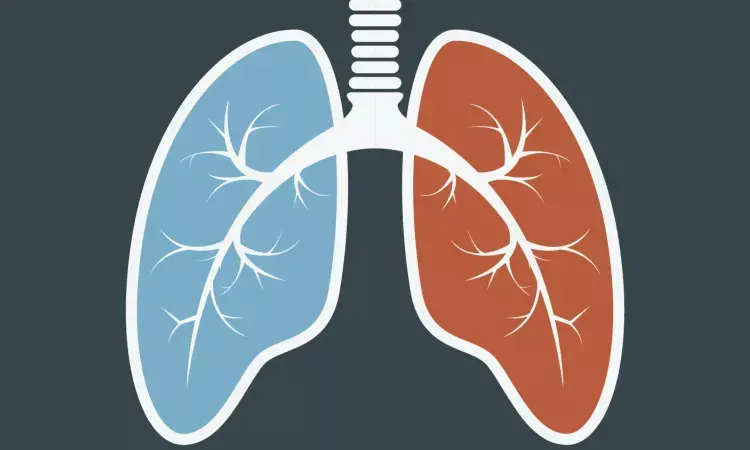- Home
- Medical news & Guidelines
- Anesthesiology
- Cardiology and CTVS
- Critical Care
- Dentistry
- Dermatology
- Diabetes and Endocrinology
- ENT
- Gastroenterology
- Medicine
- Nephrology
- Neurology
- Obstretics-Gynaecology
- Oncology
- Ophthalmology
- Orthopaedics
- Pediatrics-Neonatology
- Psychiatry
- Pulmonology
- Radiology
- Surgery
- Urology
- Laboratory Medicine
- Diet
- Nursing
- Paramedical
- Physiotherapy
- Health news
- Fact Check
- Bone Health Fact Check
- Brain Health Fact Check
- Cancer Related Fact Check
- Child Care Fact Check
- Dental and oral health fact check
- Diabetes and metabolic health fact check
- Diet and Nutrition Fact Check
- Eye and ENT Care Fact Check
- Fitness fact check
- Gut health fact check
- Heart health fact check
- Kidney health fact check
- Medical education fact check
- Men's health fact check
- Respiratory fact check
- Skin and hair care fact check
- Vaccine and Immunization fact check
- Women's health fact check
- AYUSH
- State News
- Andaman and Nicobar Islands
- Andhra Pradesh
- Arunachal Pradesh
- Assam
- Bihar
- Chandigarh
- Chattisgarh
- Dadra and Nagar Haveli
- Daman and Diu
- Delhi
- Goa
- Gujarat
- Haryana
- Himachal Pradesh
- Jammu & Kashmir
- Jharkhand
- Karnataka
- Kerala
- Ladakh
- Lakshadweep
- Madhya Pradesh
- Maharashtra
- Manipur
- Meghalaya
- Mizoram
- Nagaland
- Odisha
- Puducherry
- Punjab
- Rajasthan
- Sikkim
- Tamil Nadu
- Telangana
- Tripura
- Uttar Pradesh
- Uttrakhand
- West Bengal
- Medical Education
- Industry
Shear wave liver elastography may predict right heart function in patients with suspected PH: Study

Pulmonary hypertension (PH) is a condition characterized by high blood pressure in the arteries of the lungs, which can lead to various complications, including cardiohepatic syndrome (CHS). CHS, or congestive hepatopathy, results from hepatic congestion due to PH.
Liver stiffness, quantified using shear wave elastography, may serve as an indicator of hepatic congestion. A recent study aimed to investigate whether hepatic shear wave elastography can detect patients at risk of CHS in the early stages of PH. This study was published in The Journal Of Heart and Lung Transplantation by Zvonimir A. and colleagues.
A total of 63 patients undergoing right heart catheterization (52 diagnosed with PH and 11 with invasive exclusion of PH) and 52 healthy volunteers were enrolled. Assessments included echocardiography and hepatic shear wave elastography. CHS was defined by increased levels of gamma-glutamyl transferase, alkaline phosphatase, and bilirubin. Liver stiffness was categorized as normal (≤ 5.0 kPa) or high (> 5.0 kPa).
The key findings of the study were:
• High liver stiffness correlated with impaired right ventricular (RV) and right atrial (RA) function:
• Median RV ejection fraction: 54% (interquartile range [49; 57]%) vs. 45% ([34; 51]%), p < 0.001.
• Median RA reservoir strain: 49% ([41; 54]%) vs. 33% ([22; 41]%), p < 0.001.
• High liver stiffness associated with more severe tricuspid insufficiency (p < 0.001).
• High liver stiffness linked to a higher prevalence of hepatovenous backflow: 29% vs. 2%, p < 0.001.
• Cardiohepatic syndrome (CHS) prevalence is higher in individuals with high liver stiffness: 10% vs. 2%, p = 0.038.
• In the precapillary pulmonary hypertension subgroup (n = 48):
• CHS and high liver stiffness correlated with increased European Society of Cardiology/European Respiratory Society 2022 risk scores (p = 0.003).
Shear wave liver elastography provides valuable insights into right heart function and may complement risk assessment in patients with PH. This study underscores the potential of liver stiffness as a predictor of CHS in individuals with (suspected) PH, highlighting its significance in early detection and management strategies.
Reference:
Dr Riya Dave has completed dentistry from Gujarat University in 2022. She is a dentist and accomplished medical and scientific writer known for her commitment to bridging the gap between clinical expertise and accessible healthcare information. She has been actively involved in writing blogs related to health and wellness.
Dr Kamal Kant Kohli-MBBS, DTCD- a chest specialist with more than 30 years of practice and a flair for writing clinical articles, Dr Kamal Kant Kohli joined Medical Dialogues as a Chief Editor of Medical News. Besides writing articles, as an editor, he proofreads and verifies all the medical content published on Medical Dialogues including those coming from journals, studies,medical conferences,guidelines etc. Email: drkohli@medicaldialogues.in. Contact no. 011-43720751


